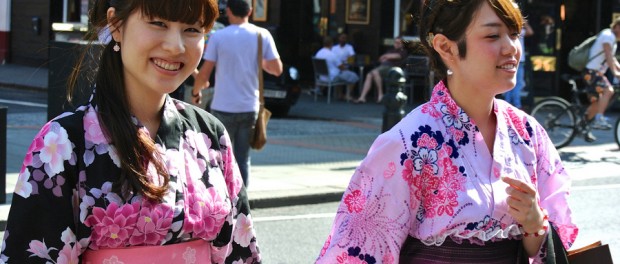Evolution of the Kimono

I find a great deal of fascination in the traditional attire of cultures from around the world. The huge variety in designs, materials, patterns, and stylistic touches are awe-inspiring and often beautiful. One of my long-time favorites is the kimono, a surprisingly complex outer garment worn in Japan.
Shockingly, this simple-looking gown actually involves many parts and many yards of fabric. The result, however, is truly beautiful, especially when combined with vibrant colors in intricate patterns and the slight luster of silky texture.
It may surprise some people to know that they almost certainly have the kimono’s grandchild in their own closet. Much like how our modern notion of pajamas arose from some casual attire from India, our modern robe finds its roots in the kimono.
The front-opening garment with its tying sash was originally an effort to accomplish a rough approximation of the kimono’s appearance without the complicated patterns and folds and twists and wraps that high fashion in Europe simply wouldn’t tolerate.
And so, the simple wrap-and-tie robe was born.
Whether it’s a long, fluffy white robe you, um, borrowed from that hotel that time, or that warm cotton robe printed with flowers your mom always wore, it was all inspired from a far more complicated arrangement from the land of the rising sun.
Personally, I’m thankful. I love seeing my wife in a robe, provided it plays by my rules. Admittedly, my rules deviate this garment even further from its classic origin — I want it far shorter (no longer than the upper thigh) and open far wider (let’s see the ladies!) than the kimono would dare. Still, I do appreciate a robe made from silken fabrics with Asian-inspired prints (cherry blossoms, dragons, etc.), but I guess that’s sort of like lip service.
Still, I like the kimono. I want to get one for my wife, but I don’t know when she’d ever have a chance to wear it.
Originally posted 2015-03-23 08:00:40.


Leave a Reply